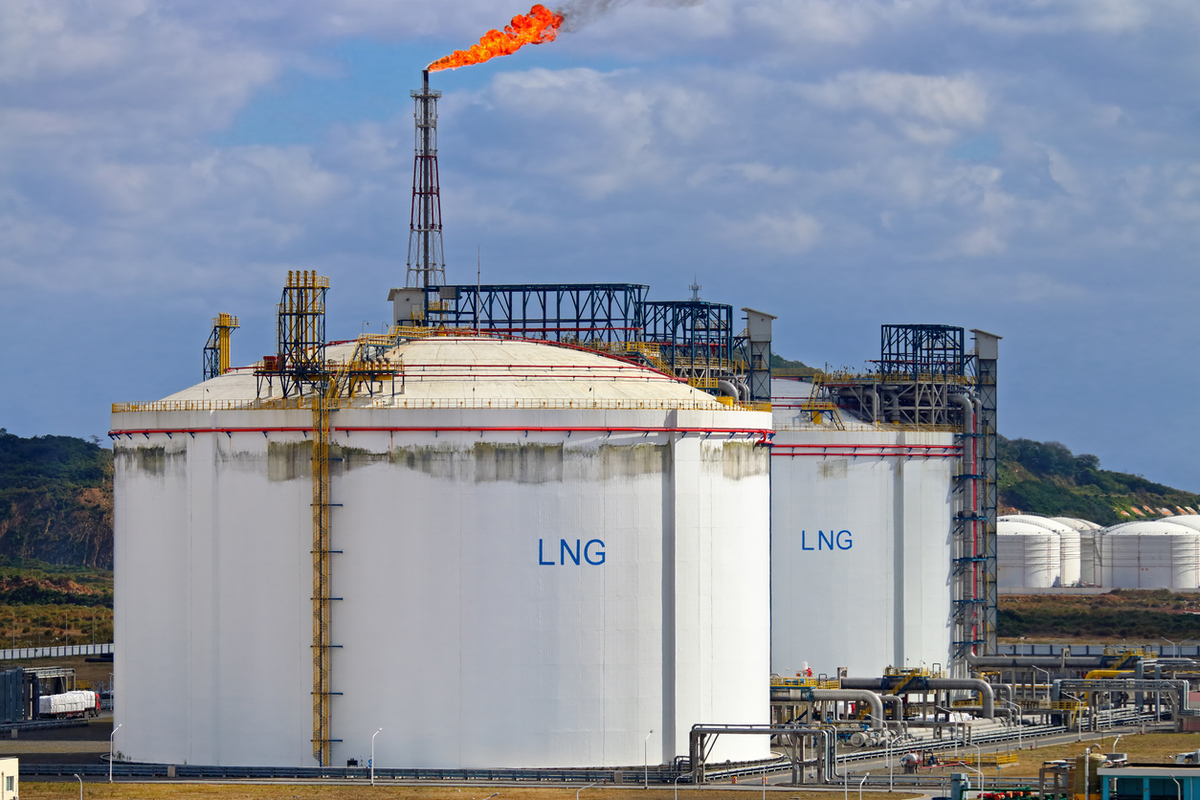Lloyd’s Register highlights risk of stranded LNG assets amid mounting pressure on ship building capacity
Key LNG shipbuilders in South Korea and China are completely booked until 2027, classification society Lloyd’s Register says, adding, “there is no scope for extra construction capacity in the short term.”
 PHOTO: Picture of large LNG tanks at an LNG terminal. Getty Images
PHOTO: Picture of large LNG tanks at an LNG terminal. Getty Images
Meanwhile, LNG carriers that are due for delivery between now and 2027 could become non-compliant by the end of the next decade, as carbon efficiency regulations intensify.
It says when the IMO’s carbon efficiency indicator (CII) regulation kicks in January, most of the existing LNG carriers are likely to fall in categories C, D and E.
The new regulation mandates shipowners to calculate an Energy Efficiency Existing Ship Index (EEXI) for each of their vessels, to grant them a CII rating between A-E, wherein A is the best rated.
The regulation is expected to become more stringent in 2026 after a review, it says.
Coming into the second half of the decade, methane slip will also be added to the assessment criterion, which could render category D and E vessels unemployable, Lloyd’s Register’s gas segment director Panos Mitrou says.
“So, although the sector (LNG) is absolutely essential to future energy transport requirements, the danger is that we have a bunch of stranded assets prevented from shipping LNG because of regulations designed to improve carbon efficiency,” he adds.
Notably, LNG has been gaining attention as the preferred near-term alternative fuel choice among shipowners to reduce emissions.
Mitrou suggests that instead of investing in newbuilds, the industry should ramp up efforts to develop energy-saving technologies that can be integrated into existing ships. These technologies should focus on boil-off management systems, methane emission reduction, onboard carbon capture, wind, and solar assistance.
Mitrou argues that energy-saving retrofits would “cost about 10% of newbuild prices prevailing today – in other words, about $25 million.” He further argues that as per their calculation there would be "efficiency improvements of between 20-30%, resulting in a far more favourable CII assessment and a substantial life extension."
These measures could also add up to 10 years of “profitable employment” for vessels, he adds.
By Shilpa Sharma
Please get in touch with comments or additional info to news@engine.online





